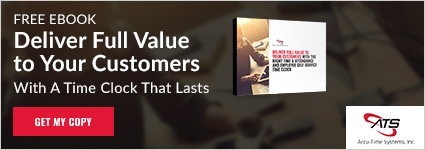When compared to on-premise options, SaaS solutions offer a greater level of flexibility. That’s just one of the reasons companies continue to adopt SaaS solutions at high rates. Part of that flexibility is the ease of bringing on a new cloud-based app and dropping an old one. According to Blissfully's "2019 Annual SaaS Trends Report," companies' SaaS application turnover rate is higher than their employee churn rates.
The SaaS quest for high retention and upsell rates continues.
As the underlying technology and functionality became increasingly commoditized, SaaS developers started focusing on the user experience (UX) to attract and retain customers. Stylish, intuitive interfaces became the new differentiator. High-quality UX remains essential, especially in the area of customer retention.
However, a SaaS looking for revenue growth will start addressing customer experience (CX). High-quality CX isn't just a pivotal differentiator to attract new customers, but a critical path to maximizing customer lifetime value (CLV) over the long term.
It’s time to expand the definition of "Service" in the software-as-a-service equation.
Here are four ways to overcome SaaS challenges and enhance the customer experience to increase revenue and profit.
1. Expand and improve tools for customer control and self-help.
A vendor's UX expertise can turbo-boost development of self-help tools. Customers with a "GSD" approach appreciate self-help functionality channels because they don't want bottlenecks. Nor do customers enjoy feeling dependent on the vendor for resolution of tasks they should be able to handle themselves.
Customer control and self-help tools can include expanded ability to add, manage, and remove their users, improved visibility into their installation with tools to resolve common tech issues on their own, and a continually growing library of training videos and wikis.
2. Provide low friction/low-stress support
Customer may not want to be dependent on the SaaS vendor, but they need to know they can rely on it. When customers do need to contact the SaaS solution help desk, the experience should be smooth. One contact resolution is ideal. Contextual assistance strengthens the relationship between SaaS vendor and customer, especially with business buyers.
Cloud solutions can also provide a service to customers didn't know they wanted. For example, at ATS we offer a drop shipping service that delivers time clocks directly to our reselling partners, which saves them time and money. We also offer to put their branding on our employee time clocks and materials, so their name stays front and center with their customers. A core group of customers will be willing to pay for a top tier, white glove-style support. ATS offers our Express Exchange Service, which replaces a damaged terminal in 24 hours
For staying competitive, cloud-based office HR software also enhances the support experience for human resource staff. By securely storing and organizing collected data, this software ensures that staff members can easily access information to address daily issues and streamline their workflow.Furthermore,
integrating features like a custom paystub generator can significantly improve payroll management, offering employees clear and accurate pay records.
Moreover, these platforms often incorporate advanced features such as automated workflows, customizable reporting tools, and integrated communication channels, all of which contribute to increased efficiency and productivity for HR professionals.
.

3. Offer expertise and professional services.
Another SaaS company survey found that 71% of them offer professional services to their customer base. Exactly where and how offering professional services, and the scope of those services, boosts a SaaS solution's CX and the bottom line is a complicated issue. Some research finds added professional services for low or no cost is a valuable customer acquisition strategy for SaaS companies looking to grow customer bases quickly. More mature SaaS solutions may use add professional services to their offering as an upsell service.
4. SaaS solutions need to focus on service as much as software
Customers want technological advances. No SaaS company can risk not continually improving and evolving its technology offerings to reflect new business challenges and opportunities. However, the SaaS solutions looking for a reliable customer base with growing revenue also need to prioritize developing the customer experience they can offer.




